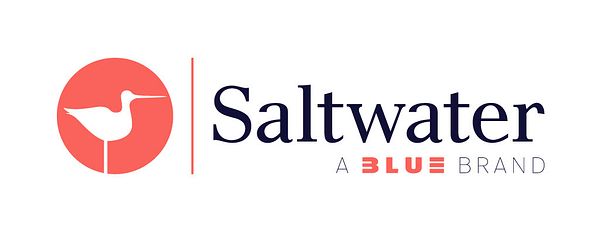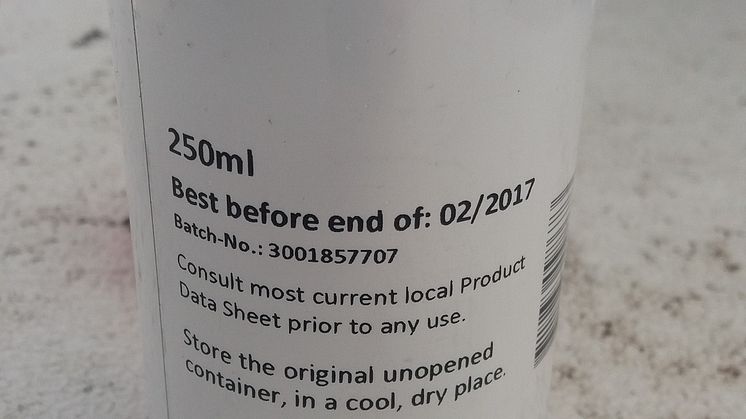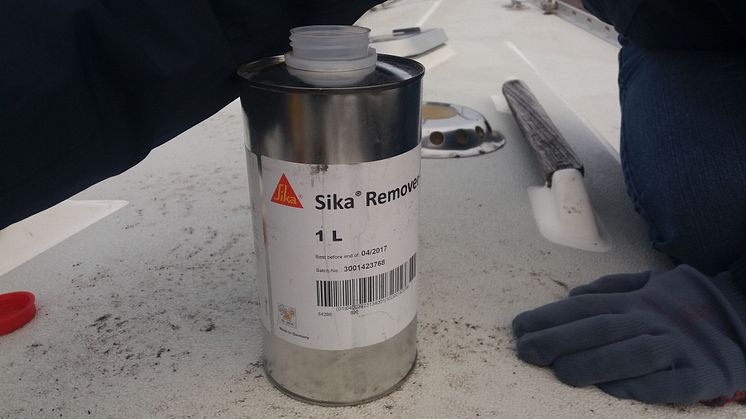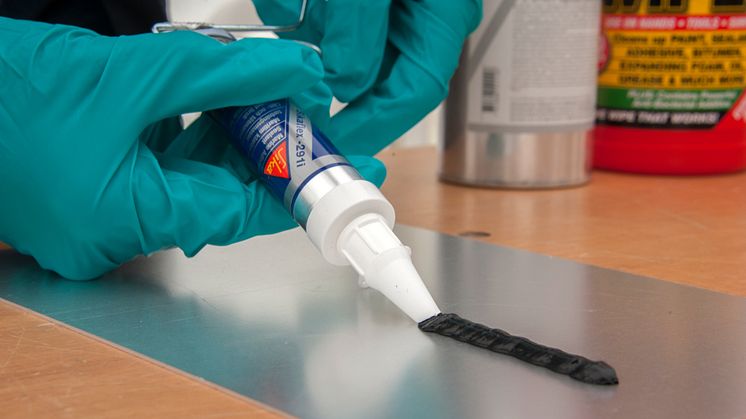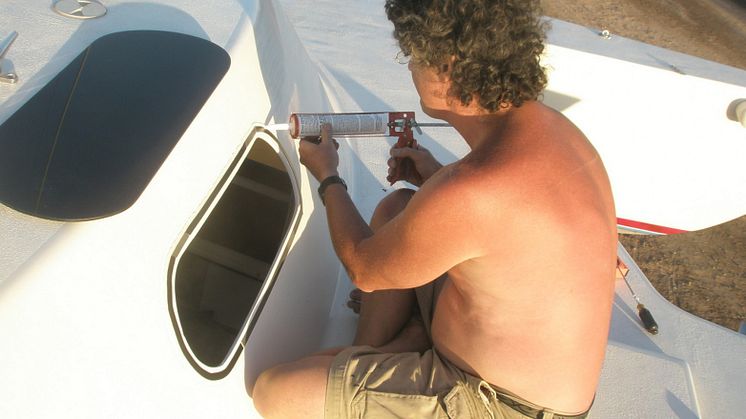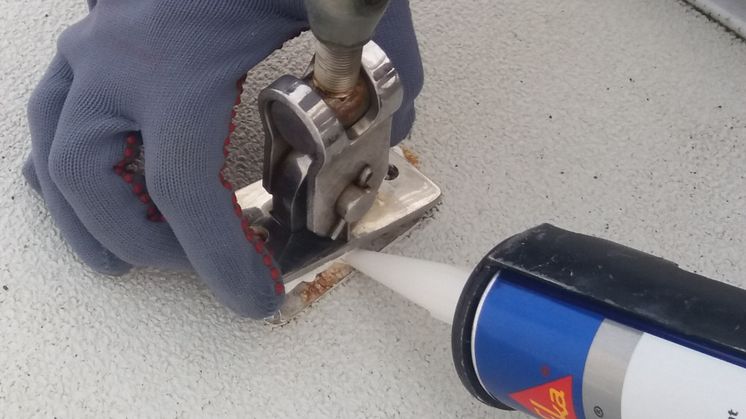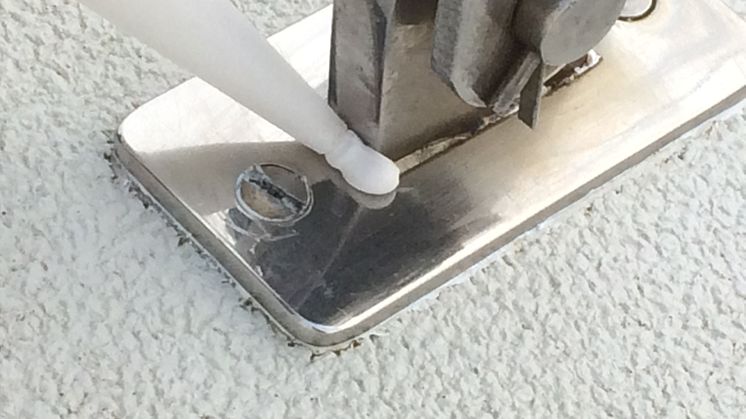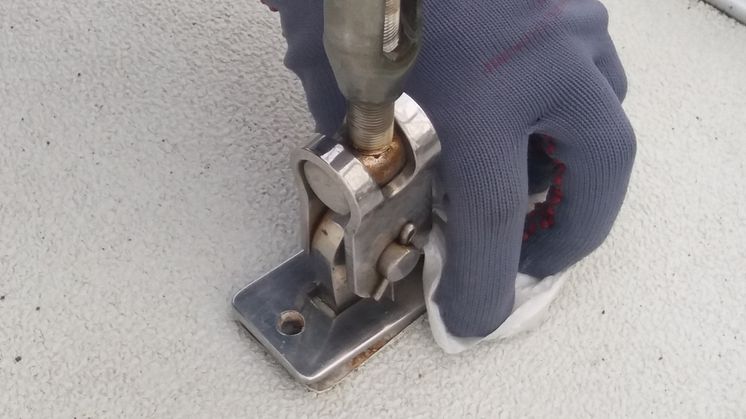
Press release -
Sika: Sika UK Reveals its Top Bonding and Sealing Tips Ahead of the New Season
With a whiff of spring in the air, you have probably started thinking about all the jobs that need doing before getting your boat back on the water. It’s worth taking the time to do any job properly, no matter how big or small, to ensure your boat remains watertight and in good working order throughout the season to avoid any unnecessary haul out costs.
Sika UK’s Marine Market Field Specialist, Gareth Ross spends a lot of time on the UK boat show circuit and visiting boat builders giving practical demonstrations on Sika’s range of marine sealants and bonding products. Here he shares his advice on some of the most commonly asked questions.
Surface Preparation
A hot topic at any of Sika’s demonstrations at boat shows and other events is surface preparation. Sika always advises boat owners to prepare the surface as this is important to laying the foundation for a properly bonded or sealed substrate. Depending on the substrate, the preparation prior to applying the primer will vary. Sika® Remover 208, can be applied to a lint free paper towel to remove old sealant residue and Sika® Aktivator-205, an alcohol solution containing a bond activating substance, can be applied to activate the surface prior to bonding. After cleaning, substrates will then require priming to improve adhesion. Sika offers two primers; Sika® MultiPrimer Marine, which is used to improve the adhesion on substrates such as woods like teak, metals like aluminium and galvanized or stainless steel, two component painted substrates, GRP and other plastics. Sika® Primer-207 is used to give improved adhesion in on substrates such as float glass, ceramic-coated glass and organic (plastic) glass.
Application temperature
Most polyurethane sealants should not be applied in temperatures below 10°C or above 40°C as it affects the curing times. The optimum temperature for substrate and sealant is between 15°C and 25°C so it is very important to observe application temperatures to achieve the most effective finish.
Application tips
When you are ready to start applying the sealant or bonding product, there are different shape beads that can be created by changing the profile of the cartridge nozzle. For instance, if sealing with a marine polyurethane sealant such as Sikaflex®-291i, it is recommended that a round bead is created using the standard shape of the nozzle because this provides a thick layer of sealant to the area and thus prevents water ingress. However, if bonding two substrates together a triangular bead, formed by making a V cut into the cartridge nozzle will ensure that both substrates are perfectly wetted out with the adhesive, guaranteeing a robust bond line.
Repairing a leaky window
There are few problems that can cause more damage to a boat than window, porthole and hatch leaks. Even well-constructed boats will eventually develop leaks simply because boats are not totally rigid structures. Repairing a leaky window is a common pre-season job for boat owners and taking the time to do it properly will pay dividends and save time in the long run by making it water-tight for much longer.
Before choosing your sealant, you will need to identify whether your windows are made of organic glass, such as Perspex or mineral glass, which is the common glass that shatters. Sika has developed two sealants specifically for both types of marine glazing. Sikaflex-295® UV is ideal for bonding and sealing plastic marine glazing materials and because of its excellent UV resistance it can be used to seal joints in areas of severe exposure. Sikaflex-296® is suitable for use with all types of mineral glass-based windows.
When working out the bond line configuration on plastic windows, it is important to bear in mind that they have more of a high thermal movement, which creates stress in the bond line. Additionally dynamic stress due to boat movement and wind load has to be taken into consideration. As with conventional glass, plastic glazing panels generally do not protect the adhesive face from damage by UV radiation, therefore the bond line must be protected from direct sunlight.
Removing sealant
Sikaflex® is a polyurethane technology, developed to produce a strong and long-lasting bond so, , it is ideal for applications that do not need repeating on a seasonal basis. Uncured Sikaflex® can be removed by using a solvent based cleaner such as Sika®Remover 208 or with wipes such as Everbuild Wonderwipes®, within the first few minutes of applying the product. Cured polyurethane sealant can only be removed mechanically such as with a sharp knife, vibra saw, cheese wire or abrading it off with a sander.
Extending the life of your sealant
Once all of your sealing and bonding jobs are complete, there may still be some product remaining in the cartridge. This does not need to be thrown away and can be kept for the odd repair that may crop up over the season. Simply keep the cartridge in a cool and dry place to slow down the curing process as hot and humid conditions will encourage moisture curing. Alternatively, if you don’t have much space on board, Sika® has developed a 70ml tube of its Sikaflex®-291i adhesive sealant, which helps reduce leftover product when only small amounts of sealant are needed.
Gareth Ross will on hand with more tips and advice during Practical Boat Owner’s ‘Ask the Experts’ at the Beaulieu Boat Jumble on Sunday 23rd April.
For a full list of Sika marine products, including step-by-step application instructions, please see the product data and H&S information sheets at www.sika.com. For more advice on priming, applying and storing Sika products please contact Sika on 01707 394444.
ENDS
For further information, please contact:
Karen Bartlett
Saltwater Stone
Tel: +44 (0) 1202 669244
E: k.bartlett@saltwater-stone.com
www.saltwater-stone.com
Related links
Topics
Sika Limited is a wholly owned subsidiary of Sika AG, a specialty chemicals company with a leading position in the development and production of systems and products for bonding, sealing, damping, reinforcing and protection in the building sector and automotive industry. Sika has subsidiaries in 97 countries around the world and manufactures in over 170 factories. Its more than 17,000 employees generated annual sales of CHF 5.49 billion in 2015.
In the UK, Sika provides market-leading solutions for flooring, sealing and bonding applications, waterproofing, roofing, structural sealing and strengthening and many other construction applications.
Sika UK’s head office is based in Welwyn Garden City at Watchmead, Welwyn Garden City, Hertfordshire, AL7 1BQ. Call 01707 363866, or visit www.sika.co.uk
